
Queen Square is a garden square in the Bloomsbury district of central London. Many of its buildings are associated with medicine, particularly neurology.

Queen Square is a garden square in the Bloomsbury district of central London. Many of its buildings are associated with medicine, particularly neurology.

Queen Square was originally constructed between 1716 and 1725. It was formed from the garden of the house of Sir John Cutler baronet (1608–1693), whose last surviving child, Lady Radnor, died in 1697 leaving no issue. It was left open to the north for the landscape formed by the hills of Hampstead and Highgate.

A statue contained within the square was misidentified as depicting Queen Anne. This statue is now believed to be a portrayal of Queen Charlotte.
Queen Charlotte's husband, King George III, was treated for mental illness in a house in Queen Square towards the end of his reign. The public house on the southwest corner of the square, called "the Queen’s Larder", was, according to legend, used by Queen Charlotte to store food for the king during his treatment.
The church, dedicated to St George the Martyr, was built following public subscription in 1706. The church's rector from 1747 to 1765 was the famous antiquary William Stukeley, whose rectory was next to the residence of the duke of Powis. [1]
Built in the early 18th century as a fashionable area, by the mid-19th century it had attracted many French refugees and the shops of sundry booksellers and print sellers. It became a favoured centre for charitable institutions, including the Roman Catholic Aged Poor Society at No. 31, and the Society of St Vincent de Paul. [2]
Gradually the mansions were turned into hospitals and other institutions. [1] The first institution which is still in the square was started by Johanna Chandler in 1860. [3] Elizabeth Malleson started the Working Women's College here in 1864. [4]
The College of Preceptors (also known as the College of Teachers) occupied No. 42 Queen Square from 1855 until 1887. [5]
In 1861, just a year after the first Victorian Turkish bath opened in London, an establishment calling itself the Ladies' True Turkish Bath, opened at No.26. [6] It was the only such bath in London open for women daily. It remained open till 1865, during which time over 37,000 baths were taken. [7]
Many of the buildings surrounding the square are devoted to providing, researching and administering health care. Two hospitals, the National Hospital for Neurology and Neurosurgery (NHNN), often referred to synechdochally as "Queen Square", and the Royal London Hospital for Integrated Medicine (formerly the Royal London Homoeopathic Hospital), make up the east side of the square. The Institute of Neurology, part of University College London (UCL), is located in the north east corner of the square. The former Institute for Public Health takes up much of the north side - the building is now used as the administrative centre for the NHNN and Institute of Neurology.
Several buildings on the west side of the square are devoted to medical research and are part of the Institute of Neurology and other departments of UCL. These include Alexandra House at number 17, which houses the UCL Institute of Cognitive Neuroscience and the Gatsby Computational Neuroscience Unit. The Wellcome Trust Centre for Neuroimaging (commonly referred to as the Functional Imaging Laboratory) is located at number 12. Numbers 8–11, the Sir Charles Symonds House, houses the Dementia Research Centre on the first floor and the Centre for Neuromuscular Diseases on the ground floor.
At the southern end of the square is the church mentioned above, the Mary Ward Centre for adult education, and the former Italian Hospital, [8] now part of Great Ormond Street Hospital for children (whose main buildings are in Great Ormond Street, off Queen Square). No 42-3, originally an 18th-century town house, has a long history of educational use: it was occupied by the Royal Female School of Art from 1861, the London County Council Trade School for Girls from 1910, the Technical College for Women in the 1930s, and the Stanhope Institute for adult education in the 1950s. The Mary Ward Centre took over the building in 1982. [9]
A women-only Victorian-style Turkish bath, the women's section of the Imperial Hotel's Turkish baths, had its own additional entrance in Queen Square from 1930 to 1962. [10] [11] The site continues to be occupied by the new Imperial Hotel.
One of the buildings, the Sobell Department, contains a lecture theatre used by UCL for postgraduate teaching. With 220 seats, it is one of the largest lecture theatres in Queen Square. It has an important past, having welcomed famed scientists such as John Hardy [12] and John Fox. [12] Its wear and tear, evident through malfunctioning desks inter alia, highlights this history.
University College London is a public research university in London, England. It is a member institution of the federal University of London, and is the second-largest university in the United Kingdom by total enrolment and the largest by postgraduate enrolment.
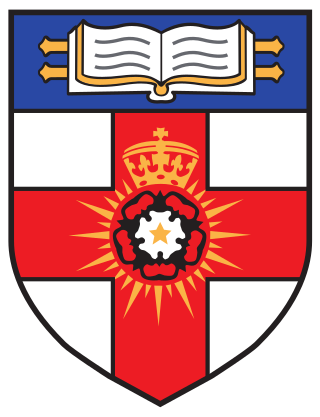
The University of London is a federal public research university located in London, England, United Kingdom. The university was established by royal charter in 1836 as a degree-awarding examination board for students holding certificates from University College London, King's College London and "other such institutions, corporate or unincorporated, as shall be established for the purpose of Education, whether within the Metropolis or elsewhere within our United Kingdom". It is one of three institutions to have advertised themselves as the third-oldest university in England. It moved to a federal structure with constituent colleges in 1900. It is now incorporated by its fourth (1863) royal charter and governed by the University of London Act 2018.

Bloomsbury is a district in the West End of London, part of the London Borough of Camden in England. It is considered a fashionable residential area, and is the location of numerous cultural, intellectual, and educational institutions. Bloomsbury is home of the British Museum, the largest museum in the United Kingdom, and several educational institutions, including University College London and a number of other colleges and institutes of the University of London as well as its central headquarters, the New College of the Humanities, the University of Law, the Royal Academy of Dramatic Art, the British Medical Association and many others. Bloomsbury is an intellectual and literary hub for London, as home of world-known Bloomsbury Publishing, publishers of the Harry Potter series, and namesake of the Bloomsbury Group, a group of British intellectuals which included author Virginia Woolf, biographer Lytton Strachey, and economist John Maynard Keynes.

A hammam, called a Moorish bath and a Turkish bath by Westerners, is a type of steam bath or a place of public bathing associated with the Islamic world. It is a prominent feature in the culture of the Muslim world and was inherited from the model of the Roman thermae. Muslim bathhouses or hammams were historically found across the Middle East, North Africa, al-Andalus, Central Asia, the Indian subcontinent, and in Southeastern Europe under Ottoman rule.
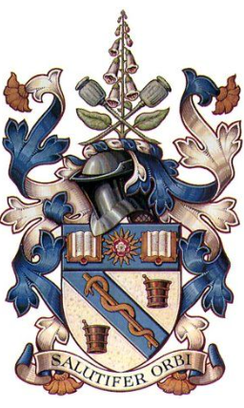
The UCL School of Pharmacy is the pharmacy school of University College London (UCL). The School forms part of UCL's Faculty of Life Sciences and is located in London, United Kingdom.
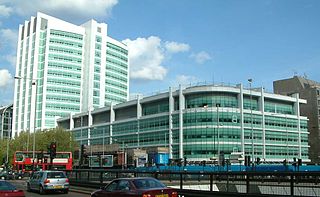
University College Hospital (UCH) is a teaching hospital in the Fitzrovia area of the London Borough of Camden, England. The hospital, which was founded as the North London Hospital in 1834, is closely associated with University College London (UCL), whose main campus is situated next door. The hospital is part of the University College London Hospitals NHS Foundation Trust.
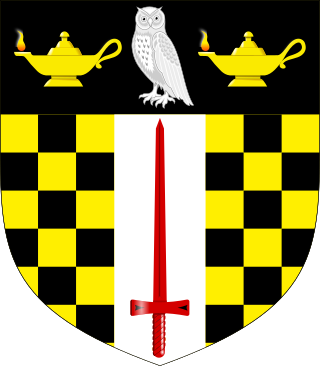
Birkbeck, University of London, is a research university located in the Bloomsbury neighborhood of London, England, and a member institution of the University of London. Established in 1823 as the London Mechanics' Institute by its founder Sir George Birkbeck and its supporters- Jeremy Bentham, J. C. Hobhouse and Henry Brougham- Birkbeck is one of the few universities to specialise in evening higher education in the United Kingdom.

The National Hospital for Neurology and Neurosurgery is a neurological hospital in Queen Square, London. It is part of the University College London Hospitals NHS Foundation Trust. It was the first hospital to be established in England dedicated exclusively to treating the diseases of the nervous system. It is closely associated with University College London (UCL) and in partnership with the UCL Institute of Neurology, which occupies the same site, is a major centre for neuroscience research.
UCL Medical School is the medical school of University College London (UCL) and is located in London, United Kingdom. The school provides a wide range of undergraduate and postgraduate medical education programmes and also has a medical education research unit and an education consultancy unit. It is internationally renowned and is currently ranked 6th in the world by the QS World University Rankings for Medicine 2023.

Middlesex Hospital was a teaching hospital located in the Fitzrovia area of London, England. First opened as the Middlesex Infirmary in 1745 on Windmill Street, it was moved in 1757 to Mortimer Street where it remained until it was finally closed in 2005. Its staff and services were transferred to various sites within the University College London Hospitals NHS Trust. The Middlesex Hospital Medical School, with a history dating back to 1746, merged with the medical school of University College London in 1987.

University College London (UCL) was founded on 11 February 1826, under the name London University, as a secular alternative to the strictly religious universities of Oxford and Cambridge. It was founded with the intention from the beginning of it being a university, not a college or institute. However its founders encountered strong opposition from the Church of England, the existing universities and the medical schools which prevented them from securing the Royal Charter under the title of "university" that would grant "London University" official recognition and allow it to award degrees. It was not until 1836, when the latter-day University of London was established, that it was legally recognised and granted the authority to submit students for the degree examinations of the University of London.

Guilford Street is a road in Bloomsbury in central London, England, designated the B502. From Russell Square it extends east-northeast to Gray's Inn Road. Note that it is not spelt the same way as Guildford in Surrey. It is, in fact, named after Frederick North, Lord North, a former Prime Minister, who was also 2nd Earl of Guilford (sic).

The Eastman Dental Hospital was based on Gray's Inn Road until it co-located with the University College London ear, nose, throat, balance and hearing services on Huntley Street, London, as the Royal National ENT and Eastman Dental Hospitals in October 2019. The hospital continues to provide specialist dental treatment as well as ear, nose, throat, hearing, speech and balance services and is part of the University College London Hospitals NHS Foundation Trust.
UCLPartners is an academic health science centre located in London, England. It is the largest academic health science centre in the world, treats more than 1.5 million patients each year, has a combined annual turnover of around £2 billion and includes around 3,500 scientists, senior researchers and consultants.
University College London Hospitals NHS Foundation Trust (UCLH) is an NHS foundation trust based in London, United Kingdom. It comprises University College Hospital, University College Hospital at Westmoreland Street, the UCH Macmillan Cancer Centre, the Royal National ENT and Eastman Dental Hospitals, the Hospital for Tropical Diseases, the National Hospital for Neurology and Neurosurgery, the Royal London Hospital for Integrated Medicine and the Royal National Throat, Nose and Ear Hospital.

The UCL Great Ormond Street Institute of Child Health (ICH) is an academic department of the Faculty of Population Health Sciences of University College London (UCL) and is located in London, United Kingdom. It was founded in 1946 and together with its clinical partner Great Ormond Street Hospital (GOSH), forms the largest concentration of children's health research in Europe. In 1996 the Institute merged with University College London. Current research focusses on broad biomedical topics within child health, ranging from developmental biology, to genetics, to immunology and epidemiology.

The Royal London Hospital for Integrated Medicine is a specialist alternative medicine hospital located in London, England and a part of University College London Hospitals NHS Foundation Trust. It is the largest public sector provider of complementary medicine in Europe. It is based in the Bloomsbury area of Central London, adjacent to Great Ormond Street Hospital.

The UCL Queen Square Institute of Neurology is an institute within the Faculty of Brain Sciences of University College London (UCL) and is located in London, United Kingdom. Together with the National Hospital for Neurology and Neurosurgery, an adjacent facility with which it cooperates closely, the institute forms a major centre for teaching, training and research in neurology and allied clinical and basic neurosciences.
Michael G Hanna is Director of the UCL Institute of Neurology, University College London and professor in clinical neurology and consultant neurologist at the National Hospital for Neurology and Neurosurgery, Queen Square, London, and also Director of the Medical Research Council (MRC) Centre for Neuromuscular Disease.
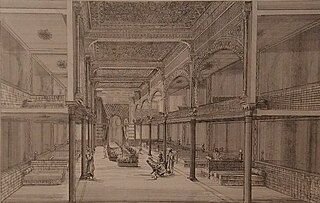
The Victorian Turkish bath is a type of bath in which the bather sweats freely in hot dry air, is then washed, often massaged, and has a cold wash or shower. It can also mean, especially when used in the plural, an establishment where such a bath is available.